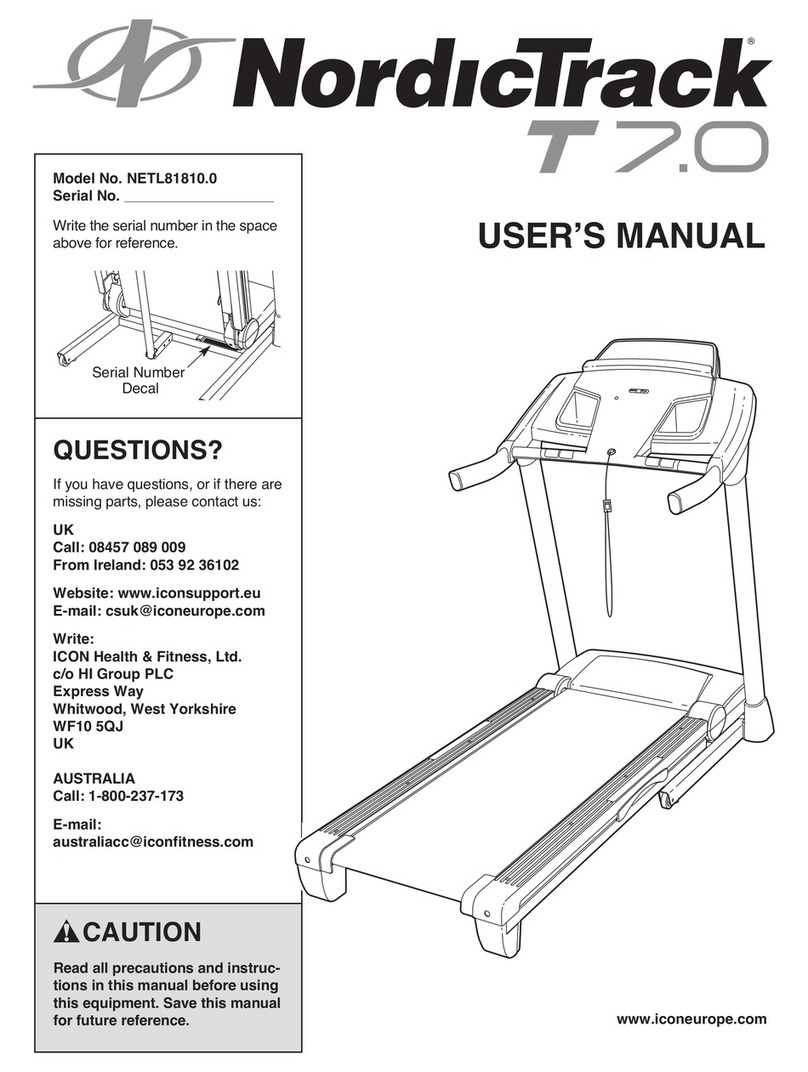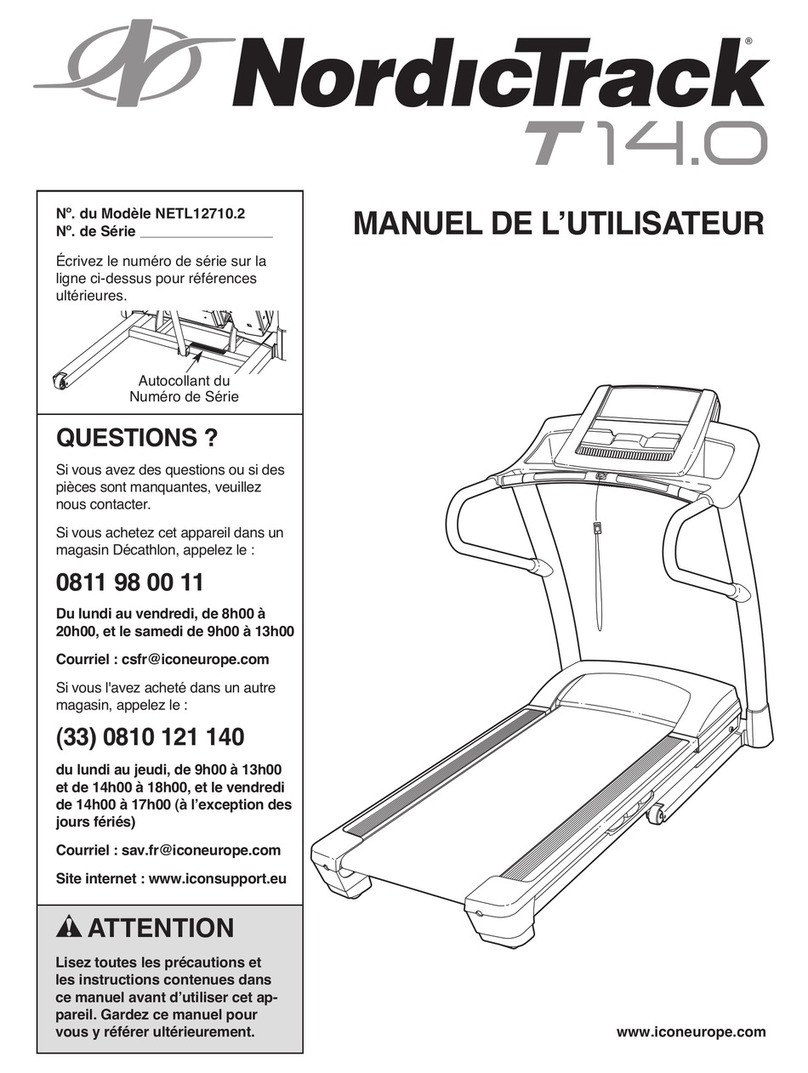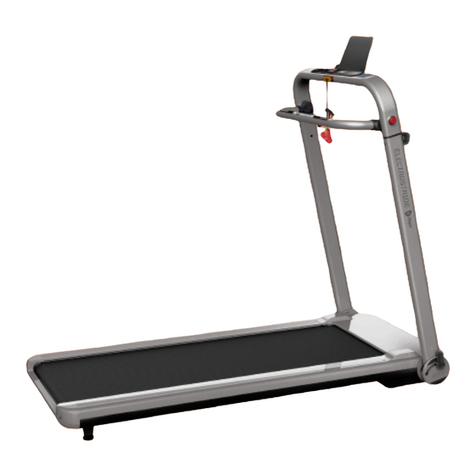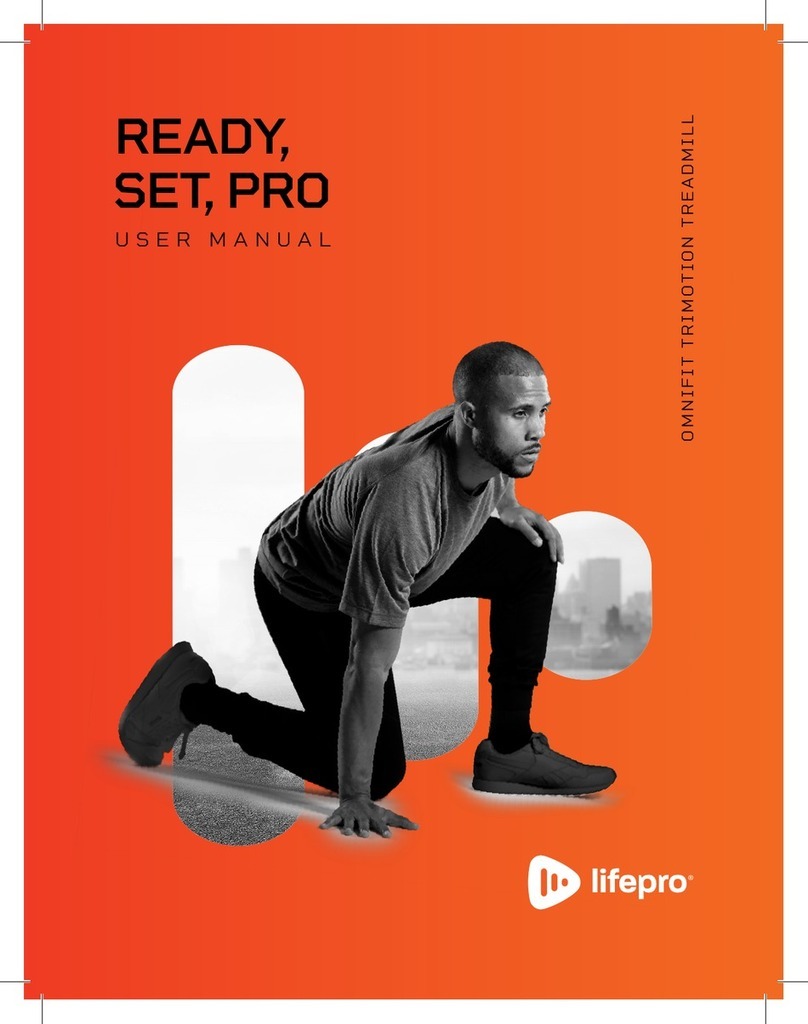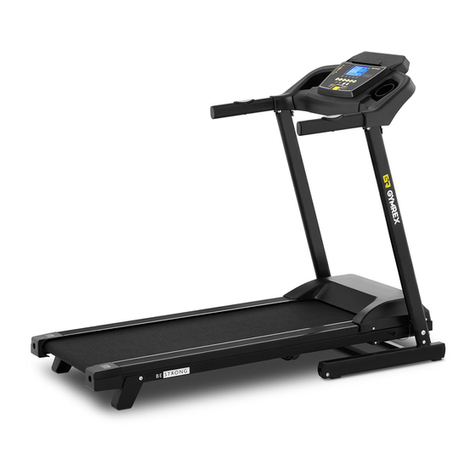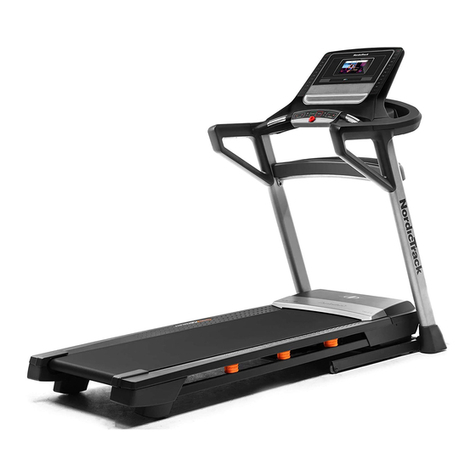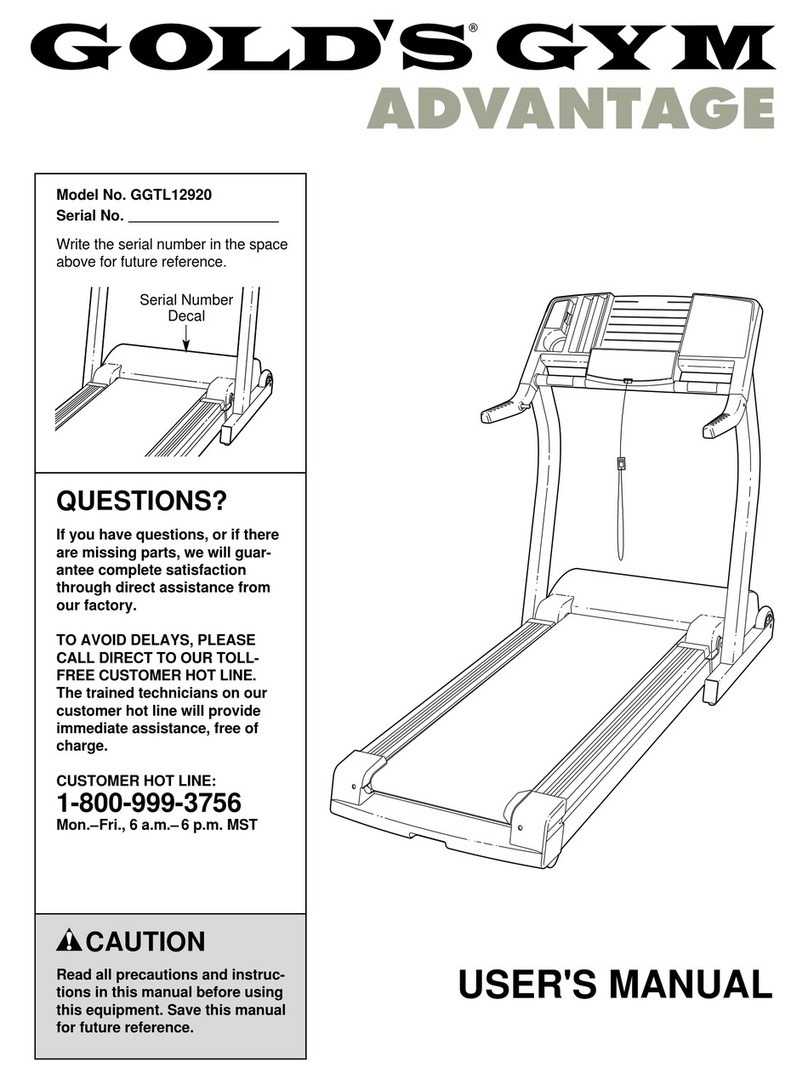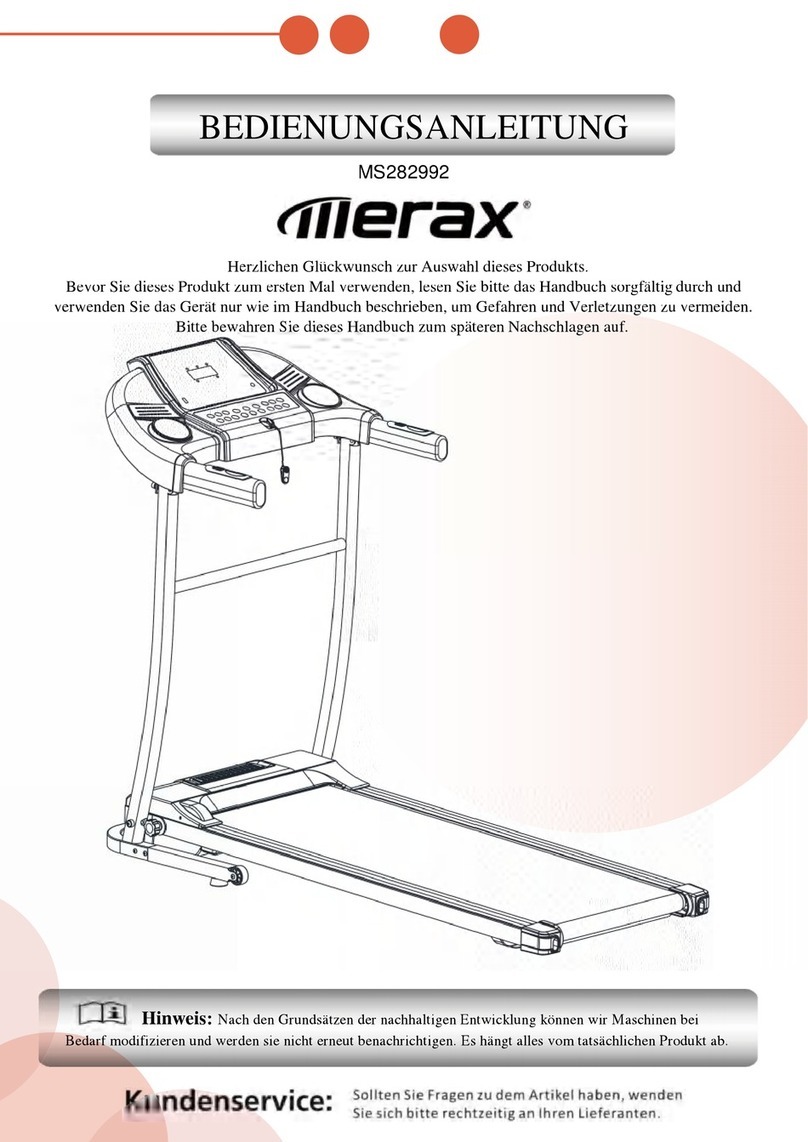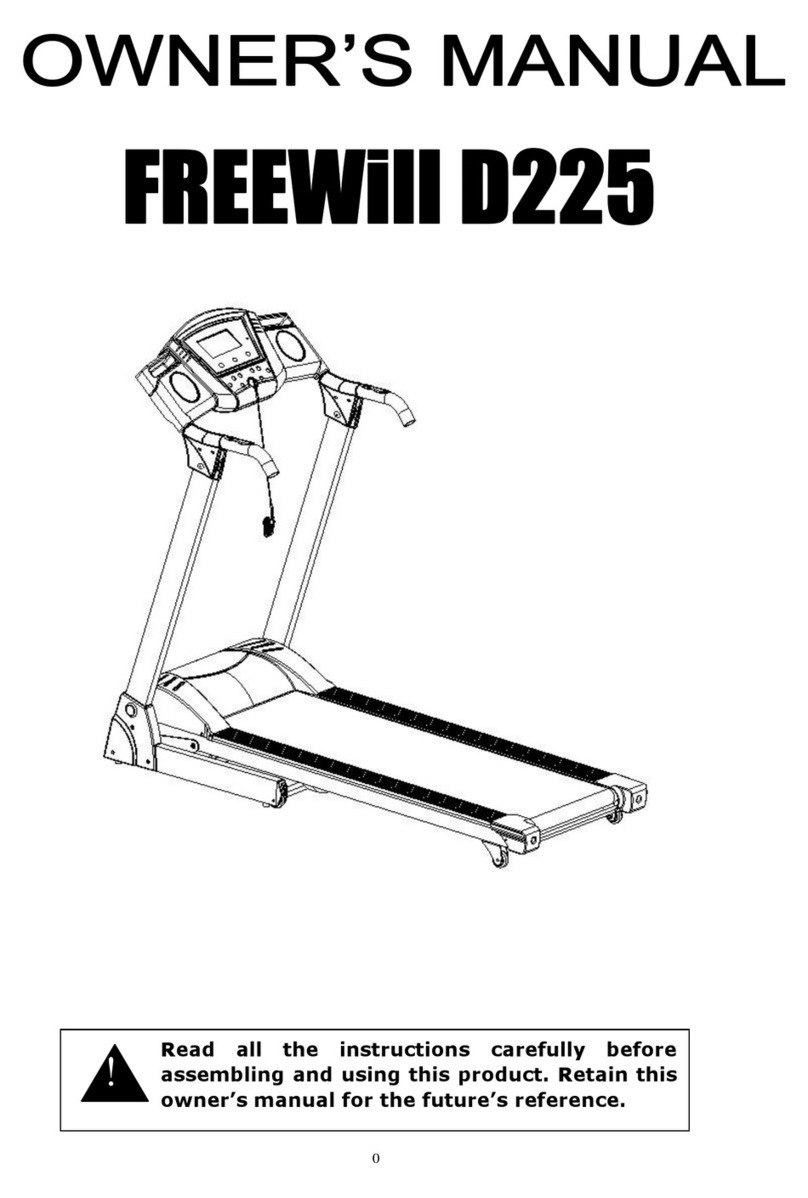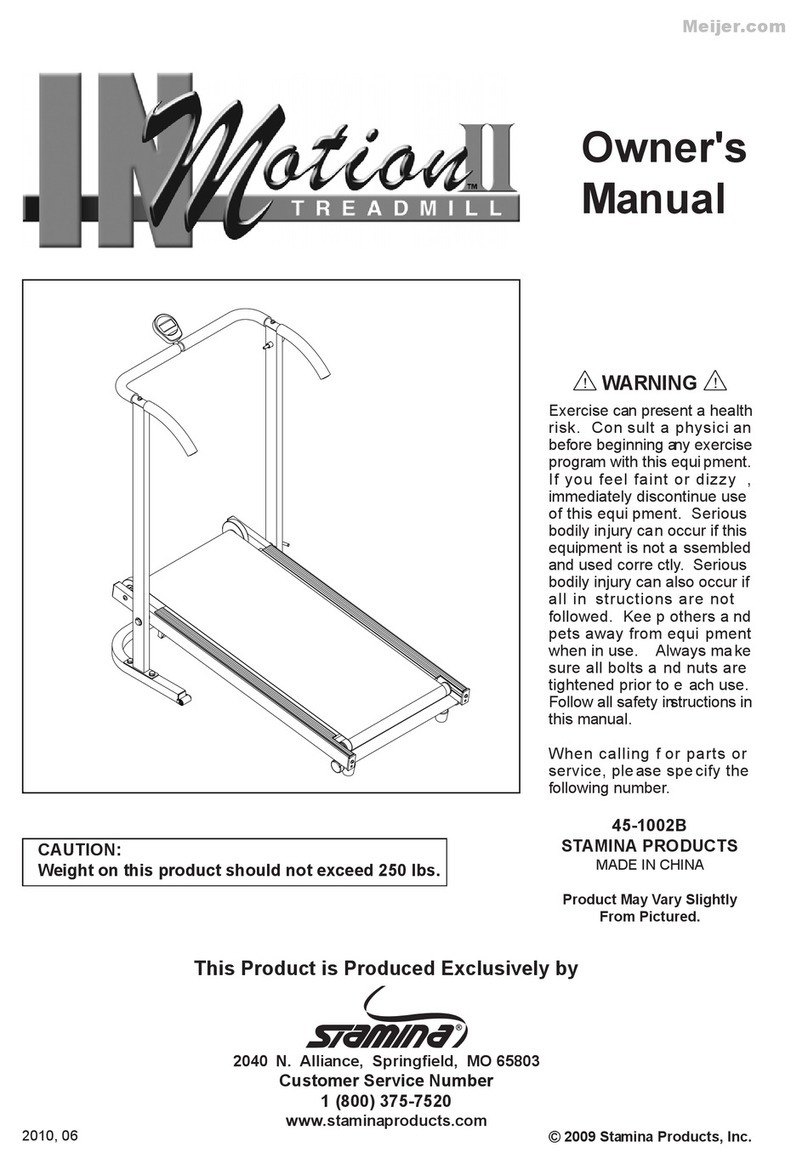
18 Pacer User Manual Lifepro Recovery + Fitness Collection 19
USING THE TRAINING PROGRAMS
The Pacer has a large number of training programs to help you reach your fitness
goals: 36 preset programs (P01-P36), three user-defined programs (U01-U03), three
heart-rate-controlled programs (HRC1-HRC3), and a BMI calculation program (F1).
TRAINING WITH PRESET PROGRAMS (P01-P36)
The 36 preset training programs are divided into 10 segments each (S-01 to S-10).
Each segment has a set speed and running deck incline. See the Preset Program
Speed/Incline Chart on pages 22-23. To workout using a preset training program:
1. Press the Program button to toggle through the programs. Choose one of the
preset training programs: P01-P36.
2. The default time of “30:00” will flash in the Time Window. Use the +/- Speed
buttons to adjust workout time from 5:00-99:00, in one-minute increments.
3. Press the Start button to begin the preset program.*
TRAINING WITH USER-PROGRAMMABLE PROGRAMS (U01-U03)
The three user programs can be personalized with your own training goals. Once you
set up a user program (Step 1), it will be saved and you can use it for training (Step 2).
STEP 1: PROGRAMMING A USER TRAINING PROGRAM
To create a user-personalized training program:
1. Press the Program button to toggle through the programs. Select one of the three
user training programs: U01, U02, U03.
2. The default time of “30:00” minutes will flash in the Time Window. Press the
+/- Speed buttons to set the workout time from 5:00-99:00 minutes.
3. Press the Mode button to confirm the workout time.
4. Default incline “0” will flash in the Incline Window and default speed “0.6” will
flash in the Speed Window. User programs have 10 segments (S-01 to S-10); each
can have a unique speed and incline.
a. Use the +/- buttons to set the speed, in mi/hr, for the first segment.
b. Use the ^/ buttons to set the incline, 0-12, for the first segment.
c. Press the Mode button to confirm your entries for the first segment.
5. Set the speed and incline for the remaining nine segments.
6. Press the Start button to begin the program.*
STEP 2: TRAINING WITH A SAVED USER TRAINING PROGRAM
To use a saved user training program:
1. Press the Program button to toggle through the available programs. Select one of
your saved user training programs: U01, U02, U03.
2. The default time of “30:00” will flash in the Time Window. Press the +/- buttons to
set the workout time from 5:00-99:00 minutes.
3. Press the Start button to begin the program.*
TRAINING WITH HEART-RATE-CONTROLLED PROGRAMS (HRC1-HRC3)
There are three heart-rate training programs which allow the user to train within
a target heart rate. During the workout, the user’s actual heart rate is compared
to the target heart rate every 30 seconds. If the heart rate is higher than the
target, the speed will automatically decrease. If it is lower than the target, the
speed will increase. These programs cannot be used with the hand sensors, they
can only be used with the included chest belt accessory. Please see HEART RATE
MEASUREMENT USING THE CHEST BELT and WARNING ABOUT PULSE & HEART
RATE MONITORS on pages 24-25. To workout using the heart-rate-controlled
program:
1. Secure the chest belt to your chest. Ensure the logo is at the front.
2. Press the Program button to toggle through the programs. Choose one of the
heart-rate programs: HRC1, HRC2, HRC3. The maximum speed varies for each
program: HRC1 = 5.6 mi/hr, HRC2 = 6.8 mi/hr, HRC3 = 8.1 mi/hr. Choose a program
what will be appropriately challenging but won’t cause overexertion.
3. The default age of “25” will flash in the display. Enter your age, from 1-99 years,
using the +/- Speed buttons. Press the Mode button to confirm your entry.
4. The system calculated target heart rate for your age will show on the display.
Please read through the heart rate information on page 24-25 for details.
a. If you want to train with the calculated value, press the Mode button to confirm.
b. If you want to train with a personalized heart rate, enter it using the +/- Speed
buttons, from 80-180. Press the Mode button to confirm your entry.
5. The default time of “30:00” will flash in the Time Window. Press the +/- Speed
buttons to enter your desired training time between 5:00 and 99:00 minutes.
6. Press the Start button to begin the program.*
*When the Start button is pressed, the display will show a countdown (you will hear accompanying
tones). The training time will begin upon completion of the countdown and the treadmill will begin
automatically. The treadmill will stop automatically when the training mode goal has completed.

